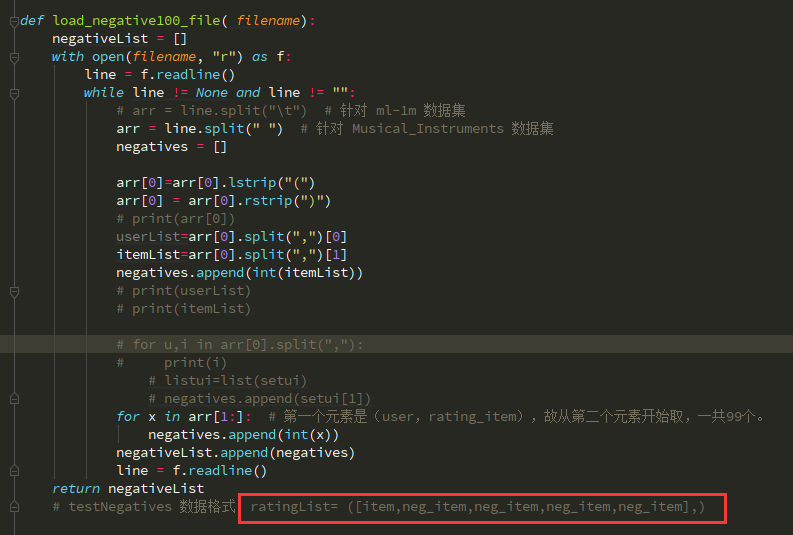原数据集的数据格式:
每行为:(test_User, test_Item) negativeItem1 negativeItem2 negativeItem3 …… negativeItem99
即每一行对应一个user 与100个item,其中1个item为正例,其余99个为负例。

将要处理成的目标数据的数据格式为:
将1个正例与99个负例拼在一起,也就是每行数据为100个item的list。(User的 ID默认从0 开始~)
【解决方案】
def load_negative100_file( filename): negativeList = [] with open(filename, "r") as f: line = f.readline() while line != None and line != "": # arr = line.split(" ") # 针对 ml-1m 数据集 arr = line.split(" ") # 针对 Musical_Instruments 数据集 negatives = [] arr[0]=arr[0].lstrip("(") arr[0] = arr[0].rstrip(")") # print(arr[0]) userList=arr[0].split(",")[0] itemList=arr[0].split(",")[1] negatives.append(int(itemList)) # print(userList) # print(itemList) # for u,i in arr[0].split(","): # print(i) # listui=list(setui) # negatives.append(setui[1]) for x in arr[1:]: # 第一个元素是(user,rating_item),故从第二个元素开始取,一共99个。 negatives.append(int(x)) negativeList.append(negatives) line = f.readline() return negativeList # testNegatives 数据格式:ratingList= ([item,neg_item,neg_item,neg_item,neg_item],)
如下:
